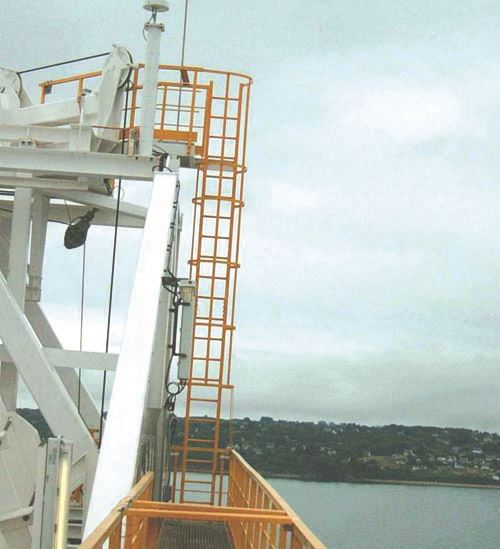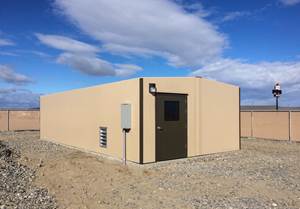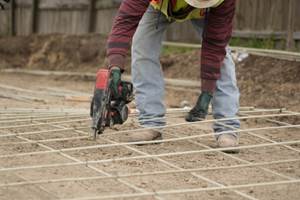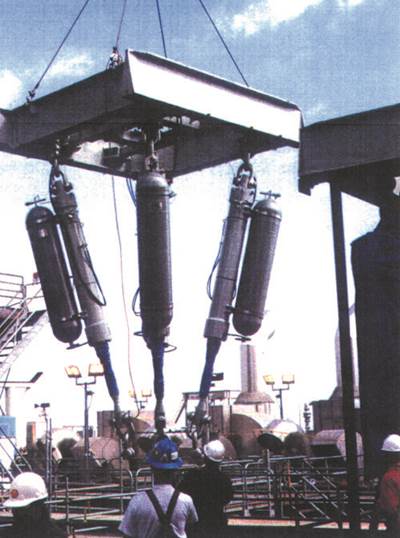Some Design Issues
A variety of resins can be used for offshore applications, depending on the requirements for the final product. General-purpose polyester offers a low-cost option that provides greater corrosion resistance than steel. Isophthalic polyester provides somewhat better corrosion resistance, while vinyl ester is pre
A variety of resins can be used for offshore applications, depending on the requirements for the final product. General-purpose polyester offers a low-cost option that provides greater corrosion resistance than steel. Isophthalic polyester provides somewhat better corrosion resistance, while vinyl ester is preferred in the most highly corrosive environments. Antimony trioxide reduces flame spread when added to many polyester and vinyl ester resins. Halogenated additives such as bromine or chlorine are excellent fire suppressants, but their use must be balanced against the higher toxin levels that they produce during combustion.
Phenolic resins are used for systems that require good fire resistance, low levels of smoke and negligible toxic fumes when exposed to fire. Phenolics also retain their structural integrity at elevated temperatures. Products made with phenolic resins are approved for USCG PFM 2-98 structural fire integrity level 2 areas. This includes gratings in open deck areas, where groups of people are likely to assemble for temporary safe refuge, and lifeboat embarkation areas.
To a large extent, the manufacturing process determines a composite component’s strength and deflection characteristics. Pultruded products have the highest fiber-to-resin ratio (typically about 70:30) and, therefore, the highest loadbearing capacity. Pultruded gratings can span greater distances with less deflection than molded gratings. A 1.5 inch/38 mm deep pultruded grating can support more than 1,000 lb/ft² (4,882 kg/m²) of uniform load over a 48 inch/1.2m clear (unsupported) span.
Molded gratings, on the other hand, have a fiber-to-resin ratio of about 35:65, which provides greater corrosion resistance than pultruded gratings. Glass reinforcements are typically layed-up in a mold in alternating directions, creating a bi-directional molded product. In contrast, the majority of reinforcement in a pultruded grating is unidirectional. A 1.5 inch/38 mm deep molded grating can support about 400 lb/ft² (1,953 kg/m²) of uniform load over a 48 inch/1.2m clear span, assuming it was fabricated with a high-strength resin. Molded gratings are particularly well suited for the splash zone because, in addition to higher corrosion resistance, the square openings offer less resistance to wave action and, thus, hold up longer.
At the McDermott fabrication yards ( Morgan City, La., U.S.A.), experience has demonstrated that the installed cost of composite gratings is slightly higher than that for steel. The larger, lighter composite panels are easier to assemble, cut very quickly with an abrasive blade, and seal with a coat of resin. Steel cutouts have to be galvanized before gratings are shipped or after their installation, and require a torch or abrasive saw for on-site assembly.
In the case of composite accumulator bottles (CABs) for riser tensioning, high modulus carbon fiber combined with Eglass fiber provides strength and stiffness and improves the filament-wound pressure vessel’s damage tolerance. Carbon makes the vessels conductive, allowing any static charges to be channeled to ground through the metal bosses at the ends of the cylinders — an important aspect of rig fire safety. Another important characteristic of the glass/carbon/epoxy composite is that it acts as an intumescent in a fire. According to Doug Johnson of Lincoln Composites (Lincoln, Neb., U.S.A.), “The composite CAB does not support combustion; It chars. The outer layer swells, taking heat away from the inner structural layers.”
Related Content
Composite buildings go monocoque
Superior protection from the elements plus fast, affordable installation and maintenance have quickly made Orenco Composites’ DuraFiber buildings an attractive choice for water and wastewater, communications, transportation and power industry outbuildings.
Read MoreGatorbar, NEG, ExxonMobil join forces for composite rebar
ExxonMobil’s Materia Proxima polyolefin thermoset resin systems and glass fiber from NEG-US is used to produce GatorBar, an industry-leading, glass fiber-reinforced composite rebar (GFRP).
Read MoreComposite rebar for future infrastructure
GFRP eliminates risk of corrosion and increases durability fourfold for reinforced concrete that meets future demands as traffic, urbanization and extreme weather increase.
Read MoreRecycling end-of-life composite parts: New methods, markets
From infrastructure solutions to consumer products, Polish recycler Anmet and Netherlands-based researchers are developing new methods for repurposing wind turbine blades and other composite parts.
Read MoreRead Next
Composite Accumulator Bottles Perform In Service
A riser tensioning system for a TLP consists of a tensioning ring and framework, with four to eight hydraulic cylinders — each with an attached pressure vessel or “accumulator bottle” — to support and allow movement of the rigid riser pipe. Installed in the riser wellbay, this primary structural system is desi
Read MorePetrobras Pioneers Topside Composites
Petrobras (Rio de Janeiro, Brazil) was the first major oil company to experiment with molded gratings in the 1980s, though these early products proved unsatisfactory due to wide variations in mechanical properties. However, advances in pultrusion and filament winding technology coupled with the availability of
Read MoreOther Applications Expand
A growing area in the offshore world is the refitting or “recycling” of older oil platforms to support additional production. A particularly active area for recycling is in the North Sea, where additional pipelines can be run to existing rigs for about $1 million (as opposed to spending $20 million for a new r
Read More














.jpg;maxWidth=300;quality=90)












